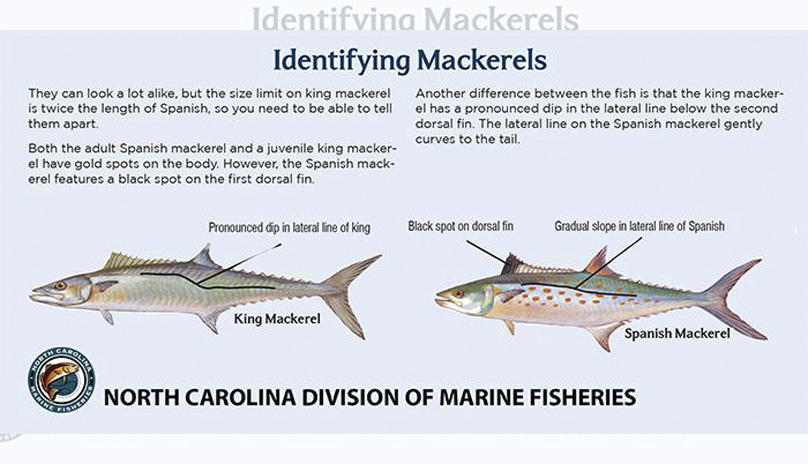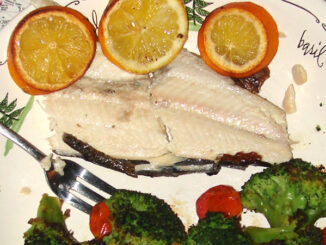
Different size, creel limits make mackerel ID critical
Anglers fishing along the coast of North and South Carolina are catching plenty of king and Spanish mackerel. And that goes for pier anglers as well as those fishing from boats. Both of these mackerel are fun to catch and the will both bite the same baits and lures.
They also look very similar to each other, especially when they are smaller. Once a king mackerel reaches a certain length, it’s pretty obvious that it’s a king. But younger ones are more difficult to distinguish from Spanish.
In both Carolinas, the minimum size for Spanish mackerel is 12 inches fork length, and anglers can keep 15 Spanish per day. For king mackerel, the minimum size is 24 inches fork length. Anglers can keep three king mackerel per day.
Many anglers say they just look for the gold spots to identify the fish. But that’s a big mistake. While Spanish mackerel have gold spots, juvenile king mackerel also have gold spots. And since the minimum size limit and the creel limit on king mackerel is different than that of Spanish, misidentifying a young king can be costly, both to the angler and to the species.
Don’t let the gold spots fool you
The North Carolina Division of Marine Fisheries said it’s much more accurate to look at a couple of other indicators to correctly identify which species of mackerel you’ve caught with these tips:
- They can look a lot alike. But the size limit on king mackerel is twice the length of Spanish. So you need to be able to tell them apart.
- Both the adult Spanish mackerel and a juvenile king mackerel have gold spots on the body. However, the Spanish mackerel features a black spot on the first dorsal fin. King mackerel lack this telltale spot.
- Another difference between the fish is that the king mackerel has a pronounced dip in the lateral line below the second dorsal fin. The lateral line on the Spanish mackerel gently curves to the tail.
Keep these characteristics in mind, and you’ll have no trouble identifying which mackerel you catch.





Be the first to comment